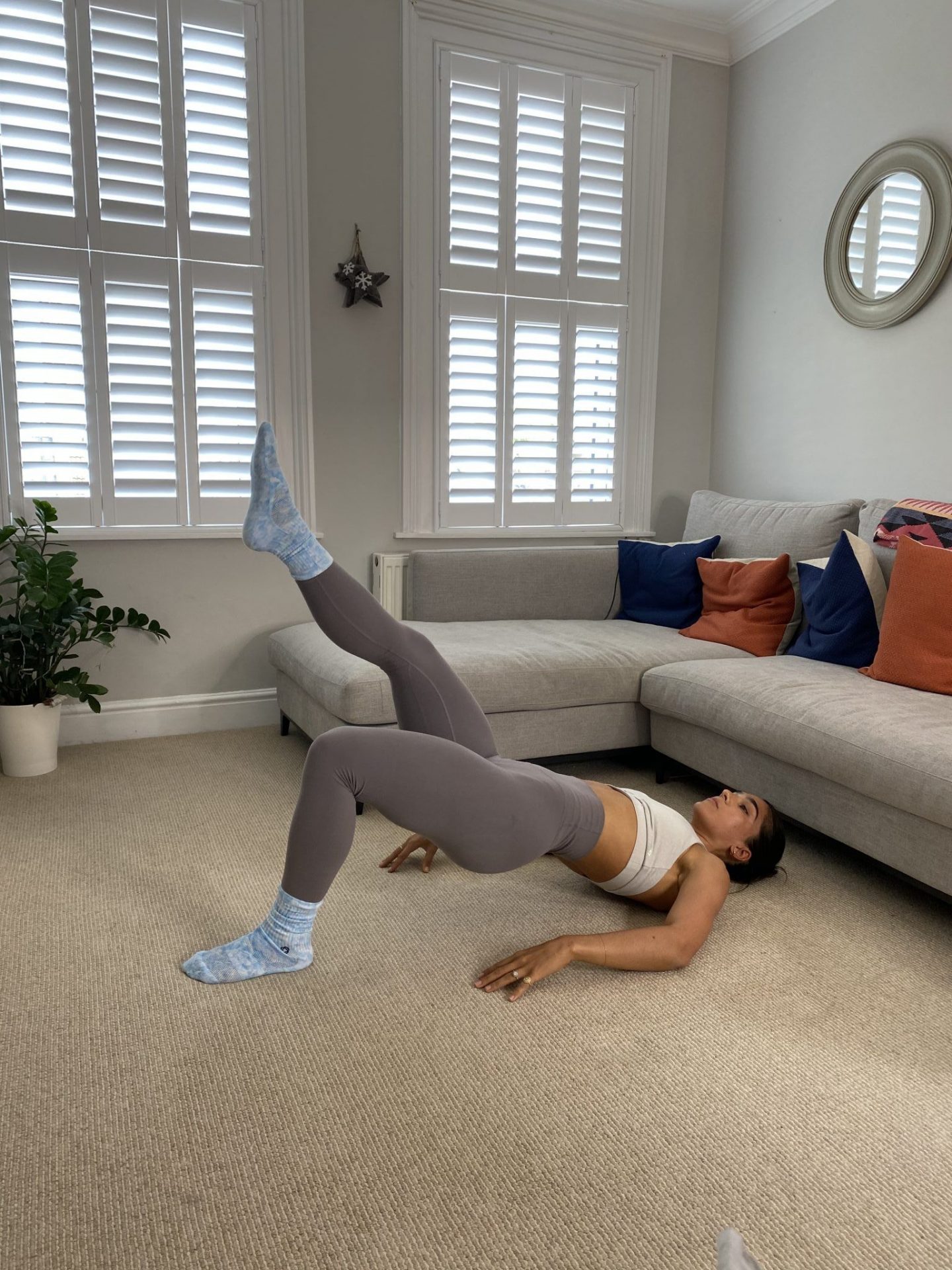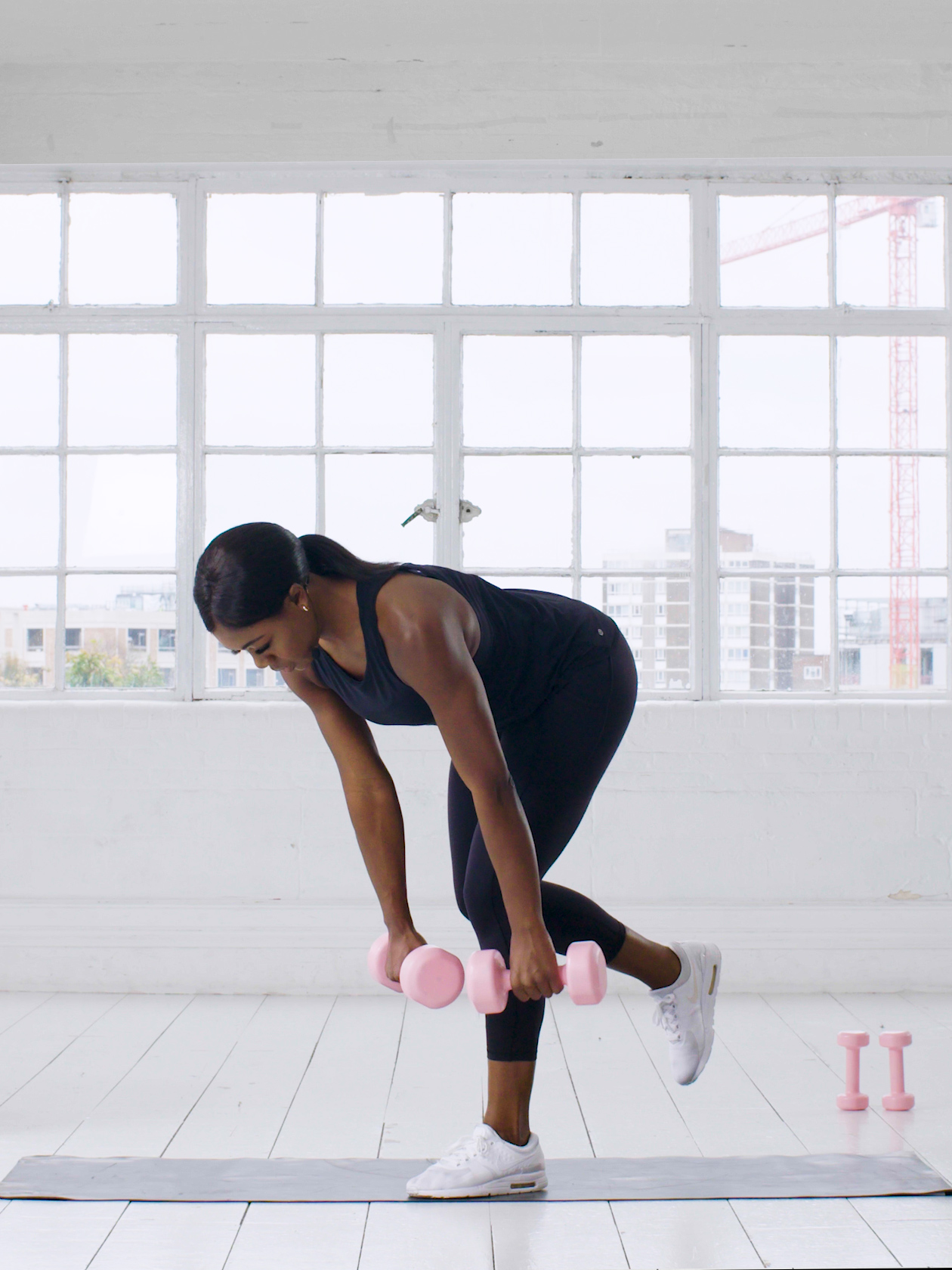Many of us are walking around with muscle imbalances – caused by anything from sitting in one position for too long, to wearing a handbag lopsidedly – which can cause pain and injury. Here’s what to do when one side of your body is stronger than the other.
When we’re exercising and going about our daily lives, different muscle groups should move symmetrically. That is, the equivalent muscles on either side of the body should be the same size and strength; while the muscles surrounding our joints should work together with equal opposing force for optimum movement.
Often, however, the muscles on one side of our body, or on one side of a joint, are stronger than the other. This is a muscle imbalance, and can be caused by anything from overtraining or incorrect form, to everyday habits such as sitting in one position for too long, lifting a child repetitively on one side, or even wearing a handbag lopsidedly.
This is not ideal, as you can probably guess, since muscle imbalances can lead to instability, reduced mobility, pain and even injury.
What should you do when one leg can take more weight than the other, or when the muscles at the front of your body are stronger than those at the back? Here, personal trainers and physiotherapists share actionable tips for fixing the most common muscular imbalances.
You may also like
Shoulder stretches: the best postures to practice when your upper body feels tight
SHOULDER IMBALANCE
Bad posture from being slumped in front of a screen for hours each day can cause our chest muscles to tighten, our shoulders to stiffen and our back muscles to weaken. This creates an imbalance in strength between the front of our body and the back, which can result in reduced mobility, painful joints and stiff muscles, says Hilde Hjertholm, qualified physiotherapist and CEO of bioelectronic therapy company NuroKor.
Remedy this by strengthening your posterior chain (the muscles on the back of our bodies that span from our neck to our toes), focusing on your back in particular. The best exercises to target your posterior chain are: Supermans, Aquamans, kneeling extensions, TRX rows and dumbbell single arm rows.
Hilde also recommends movements and stretches that open up your chest, such as the doorway stretch.
Doorway stretch:
1.Place one hand out to your side and against a wall
2.Lean away from the wall until you feel a stretch in your chest and hold it for between one to two minutes twice a day.
Compound exercises (which target more than one muscle group at the same time) are also effective at targeting your posterior chain – whether done with weights or just using bodyweight, says Jill Harrison, physiotherapist at Davenport House Clinic.
Compound exercises to try:
Deadlifts: work your shoulders, back, glutes and hamstrings
Squats: target virtually the whole of your lower body
Lateral raises: exercise the whole of the rotator cuff (the muscles and tendons surrounding the shoulder joint)
Upright rows: strengthen the deltoids, trapezius and biceps

HIP IMBALANCE
A muscle imbalance in the hips is extremely common, says personal trainer, yoga teacher and wellness coach Seema Parmar. People often have tight hip flexors and weak glutes from sitting down for too long with flexed hips, whereby the muscles that cause hip flexion are in a shortened position.
“When the hip flexors are shortened, they change the way the hip joints move,” she explains. “In addition, when the hip flexors are tightened, they reduce activity to the gluteus maximus muscles responsible for extending the hips. This also could be a potential cause of lower back pain.”
Releasing tight hip flexors requires lots of stretching. “Get into a low lunge position with your back knee on the floor and toes untucked. Push into the back foot and squeeze the glute on the same side, while pushing the hip forward and releasing through the flexors,” suggests Seema.
Other exercises to stretch and strengthen the hip flexors include single-leg hip bridges, lunges, squats, straight leg raises and seated butterfly stretches, adds Hilde.
You may also like
Good balance prevents injury and improves posture – try these 7 tips for a solid stance
LEG IMBALANCE
Muscle imbalance in the legs and around the knees are also common and can be caused by actions as mundane as wearing heeled shoes and sitting while driving, among other things. “Single-leg exercises are great for imbalances found in the leg muscles,” says Seema. “They’re also great for balance and ankle stability.”
Try single-leg squats, using a chair or TRX if you need, and single leg deadlifts with or without a dumbbell.
“You want to strengthen the weaker side and adapt the rep range according to this side,” Seema explains. This means doing as many reps as you can on your weaker side and matching this with your stronger side, rather than doing your maximum number of reps on your stronger side.
Runners often have overly strong quadriceps and weak hamstrings, adds Hilde. To remedy this, work on stretching out the quads – hold the stretch for 20 to 30 seconds on each leg – and strengthening the hamstrings. She recommends deadlifts and squats, done at home either with bodyweight or with dumbbells.

Why is it important to even out muscle imbalances?
Wherever you have muscle imbalances, it’s important to work on them. “Leaving muscle imbalances will only end up with further problems down the line,” says physiotherapist Lyndsay Hirst.
It isn’t always about strengthening the muscles, it’s also about teaching the muscles when to activate at the right time, she adds.
Pilates is another way to improve muscle imbalances. “It teaches you proper alignment and how to improve the function in lots of common areas I see that are weak in my day-to-day practice as a physiotherapist.”
Flexibility also plays an important role in imbalances across the body. Seema, a yoga teacher, encourages her clients to regularly stretch the tightest parts of their bodies. It’s important to note that a lot of muscle imbalances come from overtraining and repetitive motions, so it’s worth incorporating functional training – which prepares the body for activities most often performed in daily life – into your fitness routine.
Follow @StrongWomenUK on Instagram for the latest workouts, delicious recipes and motivation from your favourite fitness experts.
IMAGE: Getty, Stefanie Williams
Source: Read Full Article
